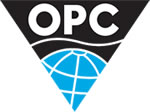Highlights
- Phase 1 rigless testing with small perforating guns confirms formation damage
- Phase 2 Sandjet testing, always the preferred perforating option, will proceed with design parameters modified to take into account the depth of formation damage
- The Company is confident that Sandjet will achieve its objective to establish gas flow
- Analysis of gas samples confirms up to 99.57% methane suitable for CNG development
- MOU-5 Jurassic well planning on track
- No change to available discretionary working capital to carry out Sandjet testing programme

Predator Oil & Gas Holdings, the Jersey based Oil and Gas Company with near-term operations focussed on Morocco and Trinidad, has provided an update on its Phase 1 rigless testing programme onshore Morocco.
Phase 1 rigless testing programme.
Objective
The Phase 1 rigless testing programme was designed to confirm potential formation damage caused by heavy drilling muds used whilst drilling and estimate the minimum depth of penetration of drilling mud into the potential reservoir formations.
This information was critical for designing the Phase 2 Sandjet programme, including perforating parameters, and for evaluating additional potential reservoir intervals interpreted by NuTech but where conventional wireline logs were potentially impacted by deep invasion of drilling mud into these intervals.
In order to carry out Phase 1 rigless testing, conventional 111/16" perforating guns, being the only option available at the time to allow Phase 1 rigless testing to commence before 5 February 2024 and the end of the extension of the Initial Period of the Guercif Petroleum Agreement facilitated by Amendment #3, were used.
It was recognised that the perforating guns were likely to be under-sized but a third party analysis indicated a maximum 12" penetration into the reservoir formation versus their interpreted zone of formation damage for the TGB-2 Sand in MOU-1 of 8".
Therefore it was assessed that the Phase 1 rigless testing programme would at least establish a minimum extent for formation damage around the wellbore of 8 inches based on the above third party information. This would assist in designing more appropriate Sandjet perforating parameters.
Operations summary
Phase 1 rigless testing operations commenced on 10 February 2024 after arrival at the well site of the explosives required for the perforating guns and allowing for adverse weather conditions caused by severe gusts of wind that prevented crane work to ameliorate.
All four zones in MOU-1 and MOU-3 to be tested were perforated and operations were completed on 19 February 2024 with the crews and equipment being demobilised. Operations took 10 days versus the pre-testing forecast of up to 14 days.
Results
For all four zones tested the under-sized 111/16" perforating guns failed to penetrate beyond the zone of formation damage caused by the necessity to use heavy drilling muds whilst drilling.
Gas analysis of isotube gas samples from MOU-3
Seven gas samples collected in isotubes in MOU-3 whilst drilling at measured depths of 446, 508, 555, 750, 817, 846 and 1395 metres have now been analysed by Applied Petroleum Technology (UK) Ltd. ("APT") in their Oslo laboratory. Gas composition is in the range 98.04 to 99.57% methane, making it ideal for a Compressed Natural Gas development with minimum processing. Isotope analysis indicates the gas is biogenic in origin.
Phase 2 rigless testing programme
The results of the Phase 1 rigless testing programme allows the design parameters for the Sandjet testing programme to be set with a higher degree of confidence in relation to achieving key objectives as follows:
- to penetrate sufficiently beyond the formation damage: and
- to perforate multiple potential reservoir zones recognised by NuTech but for which conventional wireline logs may be adversely impacted by invasion of drilling mud.
Conventional larger 27/8" perforating guns are modelled by a third party to penetrate 25 - 28" into a formation, beyond the zone of formation damage. Sandjet design parameters will be modelled to achieve this minimum objective.
Forward programme
Phase 2 rigless well testing
Phase 1 rigless testing information has confirmed Sandjet as the preferred choice for perforating multiple zones in MOU-1, MOU-3 and MOU-4 for rigless testing.
The Sandjet rigless well testing programmes for MOU-1, MOU-3 and MOU-4 will be finalised and thereafter Sandjet will be mobilised to carry out the testing operations.
Mobilisation of the Sandjet crew and equipment will occur shortly after Petroleum Agreement Amendment #4 has been ratified and all necessary regulatory approvals for Sandjet rigless testing have been received. The time framework for the Phase 2 rigless testing programme will at that time be updated.
MOU-5 well planning activities
The Company will continue to progress planning activities for the drilling of the MOU-5 well to test a large Jurassic structure updip from MOU-4. These will include finalising the well prognosis, well design, geological programme and drilling programme for regulatory approvals.
The ongoing geochemical characterisation by APT of the interpreted Jurassic section penetrated in MOU-4 is encouraging as preliminary thermal maturity studies indicate the section is mature for thermogenic gas generation and with some potential for condensate too.
Paul Griffiths, Executive Chairman of Predator, commented:
'The Phase 1 rigless testing programme has confirmed our long-standing plans to use Sandjet to better target a number of zones of interest identified by the NuTech petrophysical interpretation. The presence of potentially deep formation damage caused by heavy drilling mud has re-confirmed the necessity to test these zones for which the wireline logs are likely to have been impacted by the invasive drilling mud.
We are very confident that we can design the Sandjet testing parameters to extend beyond the zone of formation damage.
The analysis of gas collected from multiple levels whilst drilling MOU-3 is encouraging as it indicates gas from a biogenic origin with up to 99.57% methane content, which is ideally suited to a CNG development.
Planning activities to drill MOU-5 are progressing smoothly and we are encouraged by the preliminary results from the geochemical characterisation of the Jurassic section in MOU-4.
Resources estimates remain unchanged and there are no changes to available discretionary working capital to carry out the Sandjet testing programme. We are however fully aware that we need to flow gas from our main zones in the most effective manner after accounting for formation damage, and we have confidence in Sandjet achieving that objective.'
Source: Predator Oil & Gas











